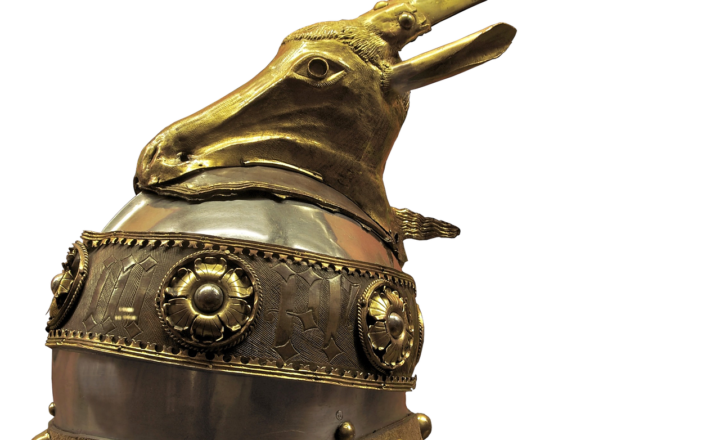
History is often painted with broad strokes in classrooms, focusing on major events and prominent figures. Yet, hidden within the pages of history are fascinating and unusual facts that reveal a more intricate and often surprising narrative. Here, we delve into ten of these intriguing historical tidbits that you likely didn’t learn in school.
1. The Great Emu War (1932)
In 1932, Australia faced an unusual problem: emus. After World War I, soldiers were given land to farm, but these flightless birds soon invaded the farmland, eating crops and causing chaos. In a rather absurd turn of events, the Australian government declared war on the emus, deploying soldiers armed with military rifles to combat the avian threat. Despite their efforts, the emus proved to be elusive and smart, leading to more than one failed expedition and ultimately, a loss for the soldiers. The event has since become a quirky chapter in Australian history and serves as a reminder of the unpredictability of wildlife.
2. Cleopatra’s Time Gap
Often depicted as a woman of ancient history, Cleopatra VII of Egypt actually lived closer to the moon landing in 1969 than to the construction of the Great Pyramid of Giza, which was completed around 2560 BC. Cleopatra was born in 69 BC, making her a contemporary of prominent historical figures like Julius Caesar and Mark Antony yet living approximately 2,500 years after the pyramid’s completion. This fascinating timeline sheds light on the misleading perceptions of historical chronology.
3. Napoléon Bonaparte Wasn’t Short
The common belief that Napoléon Bonaparte was a short man is a myth stemming from British propaganda meant to mock the French leader. In reality, Napoléon was about 5 feet 7 inches tall, which was average for his time. The misconception arose due to the difference between French and British measurement systems and his habit of surrounding himself with taller guards, which emphasized his height relative to them.
4. The Unusual Origins of the Olympic Games
The ancient Olympic Games, held annually in Olympia, began in 776 BC and were initially part of a religious festival dedicated to Zeus. But what many don’t know is that women were banned from participating and even spectating until 1920. However, the only exception was the Priestess of Demeter, who was allowed to attend to oversee the festivities. The games originally featured only one event—a foot race—and gradually expanded to include a range of competitions like wrestling, boxing, and chariot racing.
5. The First Computer Programmer Was a Woman
Born in 1815, Ada Lovelace is often recognized as the world’s first computer programmer. Working alongside mathematician Charles Babbage on his design for a mechanical general-purpose computer called the Analytical Engine, Lovelace wrote the first algorithm intended to be processed by a machine. Her pioneering work was largely overlooked until the late 20th century, highlighting the significant contributions of women to the field of technology, long before it became the male-dominated industry we see today.
6. The Eiffel Tower Can Be Shorter in Winter
The Eiffel Tower, a symbol of French engineering and design, actually changes height based on the weather. During cooler months, the metal contracts and can make the tower shrink by about 6 inches. Conversely, it can expand when temperatures rise, causing the tower to grow slightly taller. This fascinating fact showcases the incredible physics behind architectural structures and their interaction with nature.
7. The Oldest Known “Your Mom” Joke Dates Back to 1500 BC
Humor is indeed timeless! The oldest known joke, inscribed on a Babylonian tablet, dates back to approximately 1500 BC and can be translated as a “your mom” joke. This discovery indicates that humor has been part of human culture for millennia, cutting across language and societal changes. The joke exemplifies the idea that while cultures evolve, some forms of humor remain consistently relatable.
8. The Short-Lived Republic of Texas
Before becoming a state in the United States, Texas was an independent republic from 1836 to 1845. During this time, it had its own president and even its own currency. However, the Republic struggled with financial difficulties, conflicts with Mexico, and challenges in establishing a stable government. The desire for safety and economic security led Texas to seek annexation by the U.S., illustrating the complexities of statehood and national identities.
9. King Tutankhamun’s Tomb Wasn’t Just a Burial Site
King Tutankhamun, often referred to as King Tut, is famous for his opulent tomb discovered in 1922. However, recent evidence suggests that his tomb may have served not just as a burial site but as a place for the staging of royal rituals. The artifacts found within suggest that they were intended for both the afterlife and ceremonial purposes, shifting our understanding of how Egyptians viewed death and the afterlife.
10. The Inventor of Pringles Is Buried in a Pringles Can
The unique story of Fredric Baur, the inventor of the original Pringles can, reveals the playful side of innovation. Following his death in 2008, Baur’s ashes were buried in a Pringles can, honoring both his creation and his legacy. This quirky act highlights the intersection between creativity, innovation, and personal legacy, proving that the impact of an invention can be as unusual as its creator.
Conclusion
As we’ve explored, history is replete with intriguing stories and unusual facts that often escape the spotlight of traditional education. Understanding these nuances not only enriches our knowledge of the past but also adds a layer of depth to our perception of humanity’s journey. The next time you delve into a historical account, remember that behind the well-known narratives, there lies a trove of unusual events and facts waiting to be uncovered.







